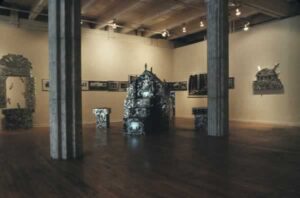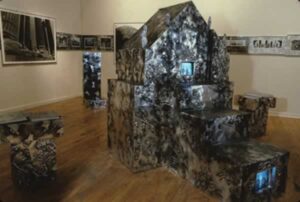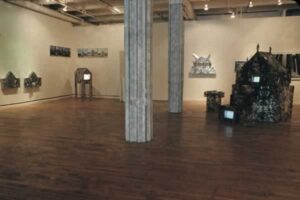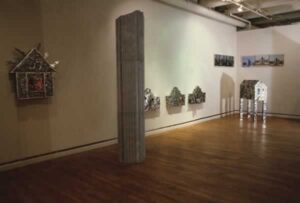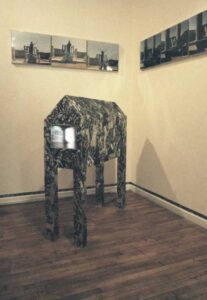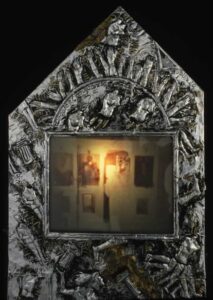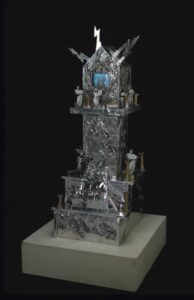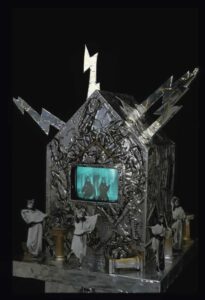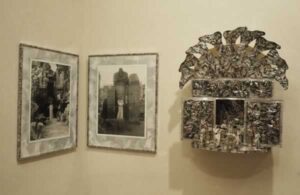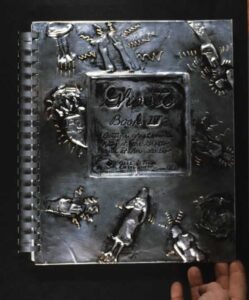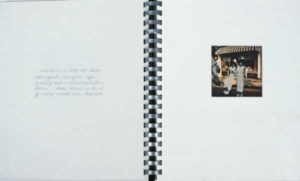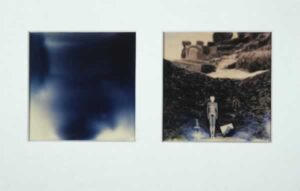During the 1970’s and early 80’s, I combined metal repoussé with video, film and photo documentation of my performance tableaux in Greece, Egypt, Asia, and Iowa. A recurrent theme is the questioning of cultural myths about women. These shrine-like sculptures are reminiscent of the vernacular folk architecture of rural Greece and Mexico and intended to create a ritualistic ambience not unlike that of some bizarre roadside shrine. In these works I am interested in the construction and deconstruction of myth and in the deeper relationships between myth, experience, and culture. For me these structures and installations functions as shrines to the mythic potential of ordinary life, embodying its most peculiar, ridiculous, and meaningful (less) qualities.
Following the 1976 All-American Glamour Kitty Pageant event and subsequent installations, and paintings, I adopted a cat-masked Isadora Duncan-like altar ego based on my research of ancient imagery associating “the feminine and the feline” with women and goddess archetypes. During the late 1970’s and early 80’s I took students to ancient sites in Greece, Egypt, Turkey, and Italy. There we staged a series of photo tableaux images and live performances. These performances were partially concerned with the construction and deconstruction of myths about women. In these images, the cat-masked ‘goddess’ image often refers to the female psyche as a strong creative force seeking to use art and ritual as a link between the physical and the spiritual, between the conscious and the subconscious, the body and the mind. The performances themselves juxtaposed long still tableaux with periods of frantic gesture and dance as a metaphor for cycles of order and chaos, death and rebirth. Most of the ritual performances were repeated at the same site various times over a five-year period. There is also a peculiar and humorous quality to their melodramas at ancient and contemporary ruin sites. In later work these animal hybrid goddesses also served to parody gender-related roles.
“Gilmor’s aims are more far-reaching, and found objects – including notes, shovels, rocks — represent just one element of a project that includes photographs, video and performance. Mixing the mythic and the prosaic, Gilmor is out to mine the resonances or archetypal figures and situations in contemporary worlds. Wall altars seem familiar but just out of reach. Her monumental floor pieces, resembling tombs or gravestones, tend towards more complexity: One has dozens of nude figures with animal heads hammered in relief on its metal surface; another incorporates a small television monitor with a videotaped performance. Both formats evince Gillmor’s fascination with both Christian and pagan – especially early Egyptian – imagery. The recurring figure in many of these works is a woman with the head of a cat derived from an Egyptian Goddess.”
David McCracken, “Group Show proves Artemisia’s Insight”, Chicago Tribune Friday Oct 20, 1989 Section 7 page 50

